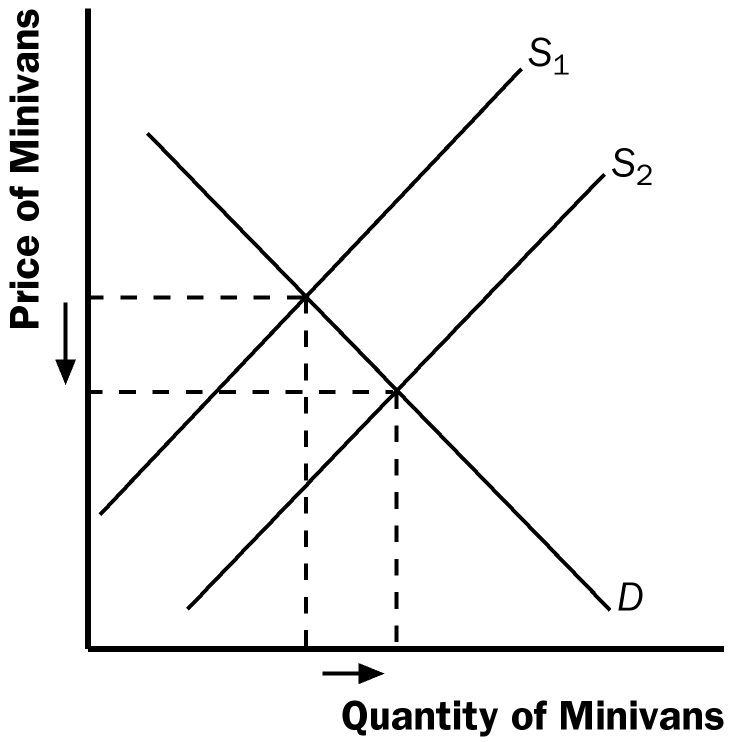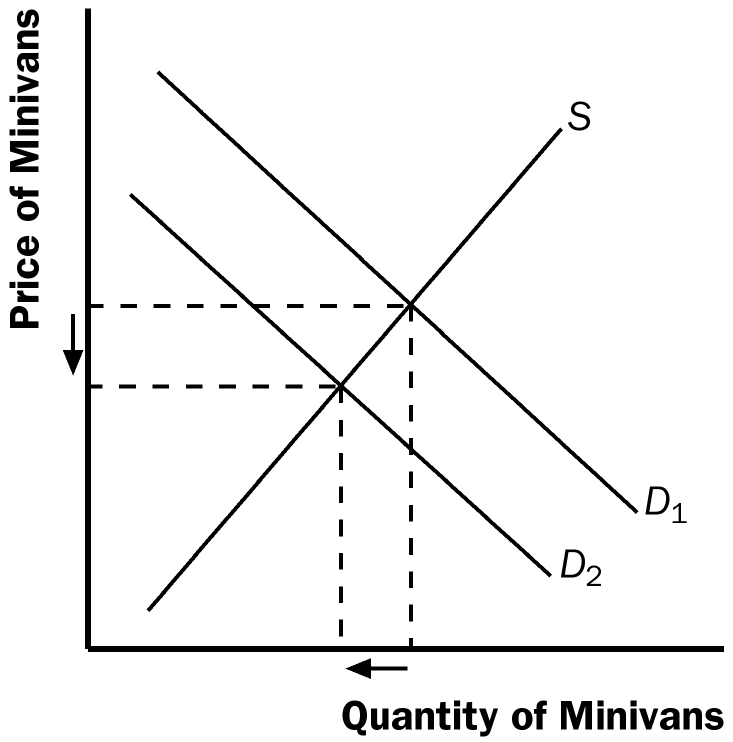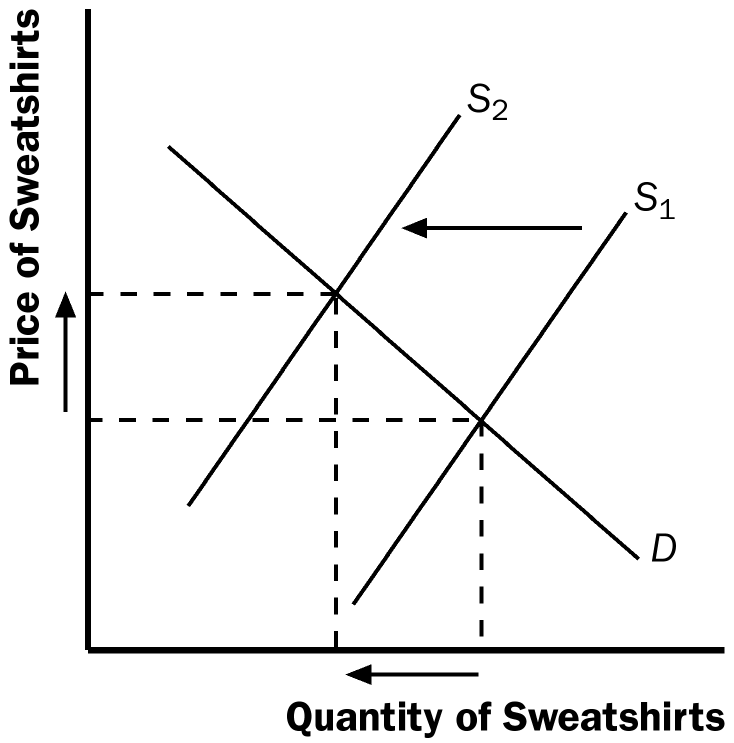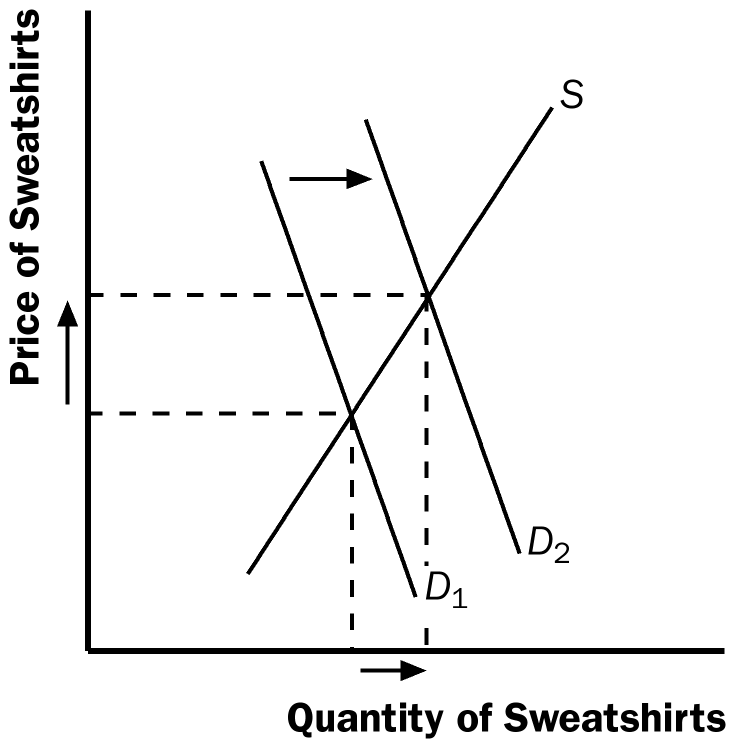3. a. If people decide to have more children (a change in tastes), they will want larger vehicles for hauling their kids around, so the demand for minivans will increase. Supply won't be affected. The result is a rise in both price and quantity, as Figure 12 shows.

Figure 12
b. If a strike by steelworkers raises steel prices, the cost of producing a minivan rises (a rise in input prices), so the supply of minivans decreases. Demand won't be affected. The result is a rise in the price of minivans and a decline in the quantity, as Figure 13 shows.

Figure 13
c. The development of new automated machinery for the production of minivans is an improvement in technology. The reduction in firms' costs results in an increase in supply. Demand isn't affected. The result is a decline in the price of minivans and an increase in the quantity, as Figure 14 shows.

Figure 14
d. The rise in the price of sport utility vehicles affects minivan demand because sport utility vehicles are substitutes for minivans (that is, there is a rise in the price of a related good). The result is an increase in demand for minivans. Supply is not affected. In equilibrium, the price and quantity of minivans both rise, as Figure 12 shows.
e. The reduction in peoples' wealth caused by a stock-market crash reduces their income, leading to a reduction in the demand for minivans, since minivans are likely a normal good. Supply isn’t affected. As a result, both price and quantity decline, as Figure 15 shows.

Figure 15






